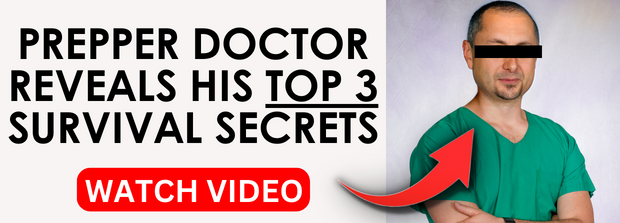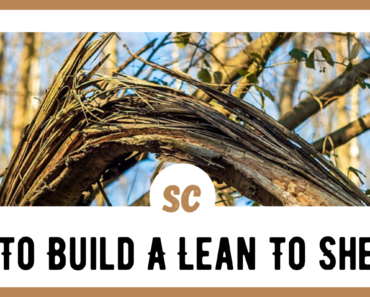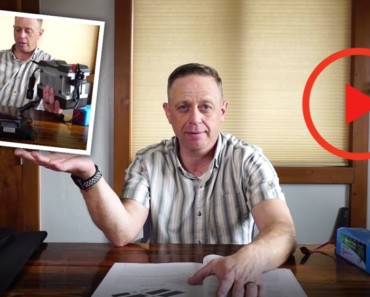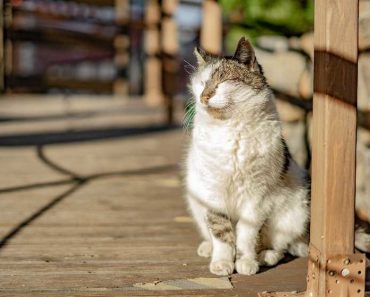As a prepper or a survivalist, you know how important it is to be ready for potential disaster scenarios. You may have gathered a range of key resources to ensure you have the best chance to help yourself and others overcome challenging circumstances.
Unfortunately, it’s not possible to be fully equipped everywhere you go and for every possible problem. There may come a time when a medical emergency arises and you need to perform cardiopulmonary resuscitation (CPR) and apply other first aid without your usual resources. Your ability to improvise and use the objects you happen to have on hand can empower you to treat injuries and possibly save a life.
We’re going to take a closer look at this concept. Let’s discuss what you need to know about addressing a medical emergency and some of the common objects you can craft life-saving tools from.
Getting Educated First
Effective improvisation — particularly when it comes to CPR and other first aid — comes from a place of solid knowledge. Yes, you might get lucky treating someone without having prior training. But you’re less likely to put them in danger if you have a good understanding of the theory and practice of key areas of first response. Core training empowers you with the data to make better-informed decisions about what you can and shouldn’t improvise.
Getting CPR certified can be beneficial on multiple levels. You can pass on your knowledge to family members and other preppers, ensuring greater community safety. The practice and examinations you’ll perform during certification courses may also give you more confidence in your ability to perform procedures and improvise solutions. Perhaps most obviously, you get guidance from experienced professionals on the correct way to perform life-saving techniques.
It can be wise to refresh your practical understanding of CPR occasionally, too. If you’re unable to attend refresher courses, you can practice the compression routines at home using improvised materials. Roll up a t-shirt and thread this through a toilet roll until the roll is at the center of the shirt. Then, fold these items inside a bath towel. You can now practice compressions with the toilet roll functioning as the center of the chest.
Another potential source of education is experienced survivalists or those with a paramedic or military medic background. These people have likely used alternative objects for treatment and handled challenging scenarios.
Considering Your Clothing
The most agile and convenient improvisation resource you’ll usually have available is your clothing. Using a sterile bandage is preferable, but strong and absorbent cloth has a range of benefits in a first-aid scenario.
Firstly, alongside the need for CPR, you may find that the recipient is injured in other ways. Immobilizing the injured limbs in a comfortable position can help them relax and maintain steady breathing. If you have a long scarf, you can fold this into a serviceable sling for arm and wrist fractures. Similarly, scarves can secure splints to broken legs. Remember to apply these after the patient has been resuscitated, as getting them breathing again is always your first priority.
Clothing can also be effective in stemming and bandaging some bleeding. T-shirts can usually be easily torn into smaller bandages or folded into pads. You can then use these to cover the wound and apply pressure. Indeed, further torn strips of cloth can tie the makeshift pad to the wound to maintain pressure until the bleeding stops. Clean clothing is usually preferable to minimize the risk of infection, so it’s often better to look for spare clothing in your backpack.
A note of caution, though. One of the risks of CPR is that the recipient may experience cracked or broken ribs. Your training should give you guidance on how to perform chest compressions causing minimal injury. Nevertheless, accidents will sometimes occur and it is generally accepted that bad CPR is better than no CPR. If a broken rib occurs, you might be tempted to use your clothing to bind the ribs. This is usually discouraged, as it can restrict the injured person’s breathing and put them at greater risk.
Multi-Purposing Your Backpack
Whether you’re out in the wild or handling a disaster scenario, one of the items you’ll probably have is a backpack. In addition to carrying your survival items, it can also be an effective improvised tool when you need to apply emergency aid.
Firstly, in a CPR situation, one of the key steps is to move the recipient into the recovery position. This involves shifting them onto their side to make it easier for them to maintain unobstructed breathing. However, you might find they tend to move themselves out of this position, particularly if they’re still unconscious. If you have a relatively weighty backpack, you may be able to use it to prop behind or in front of them to make it less likely for them to roll over while you’re attending to their other needs. However, you should avoid placing it against their head or in front of their face.
Another solid use of your backpack arises if the injured party is experiencing heavy bleeding. This can be a stressful situation but try to keep a cool head and use what you have to hand. The straps of the bag can make effective tourniquets. You can either remove them and tie them above the wound with a simple knot. Alternatively, you can thread the end of the strap through the adjuster buckle to have greater control over how tight the tourniquet is.
Preventing Contamination
Contamination is a significant concern in any medical emergency. Obviously, taking immediate steps to save a life is the most pressing issue. Nevertheless, if you can act in ways that minimize the potential for the wounds to become infected or to expose yourself to infection, you should. There are a few ways to improvise your approach to this.
When handling wounds, you should certainly try to use gloves. If you don’t have traditional nitrile gloves, latex dish gloves are a good improvised alternative, as are plastic bags. Wearing latex gloves might present health and comfort challenges for you. You might have allergies that trigger dermatitis, not to mention that the friction between your skin and the gloves may cause abrasions that lead to bacterial or fungal issues. Wherever possible, use glove liners, though in a pinch wearing thin gloves under the latex ones can offer a protective barrier.
During CPR or treating any kind of injury, it’s also wise to sanitize your hands before starting. This prevents contaminants from your skin from affecting the recipient. Since the COVID-19 pandemic, many people still take bottles of hand sanitizer outdoors with them, which is ideal. However, if you don’t have this, there are alternatives. Alcohol, particularly hard liquor, is good for sanitizing both hands and wounds. At the absolute minimum, you should wash your hands and perhaps flush injuries with clean water.
Absorbing with Tea Bags and Tampons
After CPR has been administered, you might find you need to attend to open wounds. In the best-case scenarios, gauze should be applied to these to absorb fluids, protect the area from infection, and ultimately stem the bleeding. But if you don’t have gauze to hand, some common household items can be great alternatives.
Firstly, sanitary pads and tampons are ideal improvised alternatives to gauze. This is because they’re already designed to absorb blood and sit comfortably against sensitive body areas. Sanitary pads come with adhesive strips, which you can use to hold the pad temporarily against the wound.
Another perhaps surprising gauze alternative is tea bags. For smaller wounds, the tea bag can be used to apply pressure and absorb blood. Perhaps more importantly, tea with tannins can act as an astringent that may accelerate the blood clotting process. Tea is also considered to have antiseptic and anti-inflammatory properties. If the recipient has allergies to tannins or tea, it’s best to avoid this improvised solution, though.
But how do you keep these improvised gauzes on the wounds until you reach more permanent medical care or resources? One of the best tools you may have available is plastic food wrapping. You can wind it securely around the location of the wound, particularly in the case of cuts on limbs. In many cases, you don’t even need additional adhesives to keep the wrap in place. Importantly, the plastic can form an additional barrier to protect the injured person against exposure to infection.
Conclusion
Improvisational crafting skills and a little first-response knowledge can be powerful life-saving tools in an emergency. The everyday objects around you — from clothing to tea bags — can make for vital tools when you don’t have a dedicated first aid kit to hand. It’s important to remember not to take unnecessary risks when improvising. Aim to make well-informed decisions before acting, particularly for injuries that aren’t highly time-sensitive. You may also want to stock some of the items we have discussed here in your kit, since many of them are multi-purpose and can be used in a variety of situations.




























